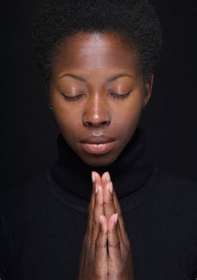
Modern Igbo outside Siyahh Yisrael Synagogue
The Igbo Jews of Nigeria, who call themselves the “Benei-Yisrael,” are part of the larger Igbo ethnic group. Most of the Igbo Jews live in an area which straddles the River Niger, near the Anambra states.
The Igbo Jews are said to have migrated from Syria, Portugal and Libya into West Africa around 740 C.E. It is claimed that the initial immigrants were from the biblical tribes of Gad, Asher, Dan, and Naphtali. Later, they were joined by more Jewish immigrants from Portugal and Libya in 1484 and 1667 respectively.
Some of the Igbo Jews claim that the river Sambation (beyond which the ten lost tribes were dispersed by the Assyrians) is in Africa.
In a paper distributed by the “Igbo Benei-Yisrael Association of Nigeria,” three possible migration routes of Jews into Africa are proposed:
- Through migrations west from the Arabian Peninsula, Egypt, Ethiopia, Kenya, and the Sudan.
- Through trade and travel of North African Jews within the West African Kingdoms of Mali, Songhai, and Kanem-Bornu. According to accounts from explorers of the region, several of the rulers of the Songhai Empire were said to be of Jewish origin.
- Through Jews traveling with Kel Tamasheq (Tuareg) trade caravans from various parts of Northeast Africa into West Africa.

Possible Migration Routes of Jews into Africa
Another possibility described by a 9th century Jewish traveler named Eldad ben-Mahli (also known as Eldad the Danite) is that his tribe, Dan, migrated from the land of Israel so as not to take part in the civil war at the time of Yeroboam’s secession, and were residing in the land of Havilah beyond the rivers of Ethiopia. According to Eldad, three other tribes in addition to Dan – Naphtali, Gad and Asher, as mentioned above – were with them; these had joined in the times of Sennacherib.
Eldad wrote that the Igbo Jews in Africa had an entire body of scriptures except for the books of Esther and Lamentations. They knew nothing of the Mishna nor the Talmud; but they had a “Talmud” of their own in which all the laws were cited in the name of the biblical Joshua. Eldad described a specific law dealing with the rules pertaining to the killing of animals for food.
Jewish communities throughout Muslim-controlled lands suffered greatly and in many cases were destroyed. The Igbo Benei-Yisrael lost whatever written documents and other written traditions that may have existed. The communities strived to maintain at the least a knowledge of their Israeli origin and to practice certain traditions in secret.
An early statement on the history of the Igbo Jews was published in the autobiography of an Igbo man, Olaudah Equiano, a Christian-educated freed slave who remarked in 1789 on “the strong analogy which… appears to prevail in the manners and customs of my countrymen and those of the Jews, before they reached the Land of Promise, and particularly the patriarchs while they were yet in that pastoral state which is described in Genesis — an analogy, which alone would induce me to think that the one people had sprung from the other.”
Even with the loss of written records, many religious practices of the Igbo Jews correspond with mainstream Jewish practices. These include:
- Circumcision eight days after the birth of a male child
- Observance of some kosher dietary laws
- Separation of men and women during menstruation
- The celebration of holidays such as Yom Kippur, Rosh Hashanah, Sukkot and Passover.
- In recent times, the communities have also adopted holidays such as Hanukkah and Purim, which were instituted only after the tribes of Israel had already dispersed.
Israeli Prime Minister Yitzhak Rabin sent a team to Nigeria between in 1995 to search for the “Ten Lost Tribes of Israel.” Western rabbis and educators have since sent books, computers, and religious articles to Nigeria. However, the State of Israel has, to date, not officially recognized the Igbo as one of the Lost Tribes.
Jews from outside Nigeria founded two synagogues in Nigeria, which are attended and maintained by Igbo Jews.

Igbo Benei-Yisrael clan
Because no formal census has been taken in the region, the number of Igbos in Nigeria who identify as either Israelites or Jews is not known. There are currently 26 synagogues of various sizes. Some researchers estimate there may be as many as 30,000 Igbos practicing some form of Judaism.
However most of these “Jews” are probably Messianic; only some 1,500 – 2,000 of them no longer believe in Christian doctrine, according Rabbi Howard Gorin, a a rabbi affiliated with the Conservative Jewish movement, who has visited the community. Gorin adds that he would only count a handful of the community as Jewish according to
halacha (Jewish law).
Gorin has posted a number of
short videos on YouTube of the Igbo community singing songs in Hebrew and chanting from texts.
Rabbi Brant Rosen visited the Igbo with the help of the Kulanu organization.“Are the Igbo, in fact, descended from the Lost Tribes of Israel?” he asks. “I don’t know that there will ever be any way to prove this conclusively one way or the other…but as I see it, whether or not they are actually lost Israelites is relatively moot in the face of the fact that the Igbo absolutely believe it to be true.”
Daniel Lis, a Swiss-Israel “social anthropologist” also writes about his trip to visit the Igbo
. He refers to Remy Ilona, an Igbo lawyer in Nigeria who has written a book with the title
The Igbos: Jews in Africa? and accompanied Lis during his visit.
This Wikipedia article on African Jews has a short section on the Igbo Jews.




































